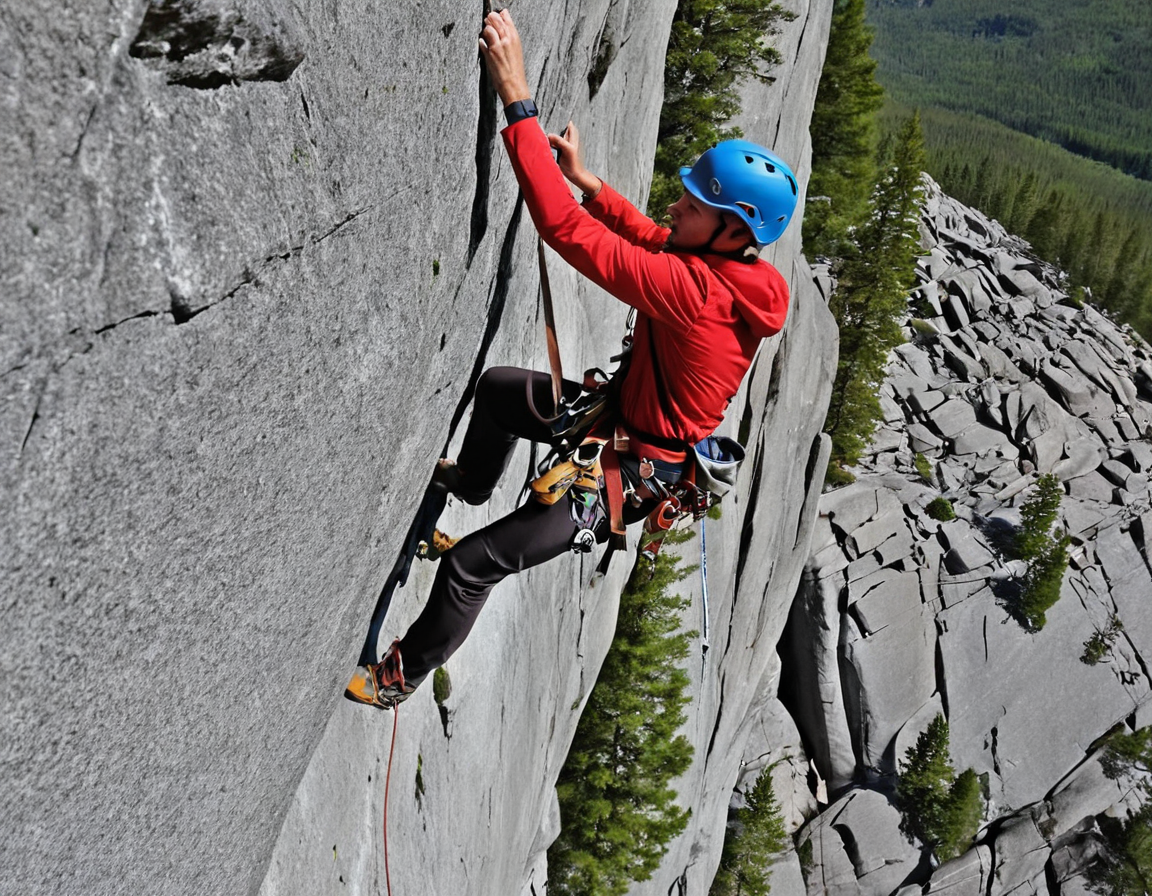: Embracing Heights: A Beginner’s Guide to Safe Rock Climbing

Rock climbing is an exhilarating adventure sport that combines strength, skill, and courage, taking you on a thrilling journey up sheer cliff faces. As with any physically demanding outdoor activity, safety should be your top priority when embarking on the world of rock climbing for the first time. This beginner’s guide to safe rock climbing will provide an overview of essential techniques, equipment, and practices that are crucial in ensuring a secure and enjoyable experience.
**Essential Equipment:**
1. *Harness:* Your harness is your lifeline when it comes to rock climbing safety. A well-fitted harness evenly distributes the force exerted on your body while ascending or descending, reducing pressure points and minimizing risk of injury. Always ensure that all straps are secure before starting a climb.
2. *Helmet:* Protecting your head is crucial in rock climbing as it helps to safeguard you from falling rocks or potential impacts with the cliff face. Choose a helmet designed specifically for climbers, offering optimal protection without compromising on comfort and weight.
3. *Climbing Shoes:* Specialized climbing shoes provide better grip on various surfaces, enabling you to climb efficiently while minimizing fatigue. They also have a snug fit that helps in maintaining balance during the climb. Investing in quality climbing footwear will greatly enhance your experience and safety on the rocks.
4. *Rope & Belay Device:* A dynamic rope designed for rock climbing is essential for absorbing shock and ensuring smooth descents. Accompany this with a reliable belay device, which allows you to securely manage the rope while your partner climbs up or down.
5. *Carabiners & Chalk Bag:* Carabiners are used to connect different components of your climbing system, such as attaching the rope to your harness or connecting quickdraws when lead climbing. A chalk bag filled with magnesium carbonate (chalk) will help keep your hands dry and improve grip on challenging climbs.
**Basic Techniques:**
1. *Knot Tying:* Knowing how to tie essential knots, such as the figure-eight follow through for attaching your rope to the harness or setting up an anchor system, is crucial in maintaining safety during a climb. There are several online tutorials available that can guide you step by step on proper knot tying techniques.
2. *Belaying:* Proper belay technique ensures efficient support and protection for your climbing partner. Learn how to manage the rope using a belay device, maintain communication with your climber throughout the ascent, and respond immediately in case of falls or slips.
3. *Climbing Techniques:* Master basic climbing movements like stepping up, smearing (using the sole of your shoe for traction), and stemming (placing one foot behind the other to maintain balance). These techniques will greatly improve your efficiency and safety on various rock surfaces.
**Safety Practices:**
1. *Always Warm-Up:* Stretching and warming up before a climb can prevent injuries caused by sudden strain on muscles. Incorporate dynamic stretches, such as leg swings or arm circles, into your pre-climb routine.
2. *Check Your Equipment Regularly:* Regular checks of your harness, rope, carabiners, and other gear ensure they are in good working condition and reduce the risk of equipment failure during a climb. Never compromise on safety by using damaged or worn out gear.
3. *Climb with an Experienced Partner:* Rock climbing should never be undertaken alone, especially as a beginner. Having an experienced partner who can guide you through techniques and offer support in case of emergencies is crucial to your overall safety.
4. *Learn Basic First Aid & CPR:* Knowing how to respond to common injuries like sprains, cuts or even cardiac arrests could save lives on the rock face. Take a certified course in basic first aid and CPR before embarking on any climbing adventure.

In conclusion, embracing heights safely requires proper knowledge of equipment usage, mastery over essential techniques, and adherence to crucial safety practices. By following this beginner’s guide to safe rock climbing, you’ll be well-equipped to embark on your exciting journey up the world’s most magnificent cliff faces with confidence and security.
